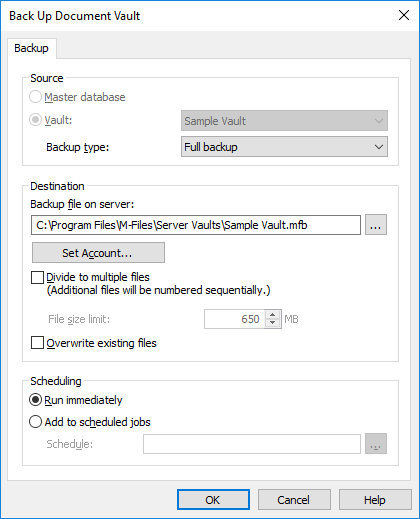Backing Up a Document Vault
The vault backup function can be used for backing up the document vault or for scheduling a recurring vault backup job. For more information about scheduled backups, refer to Scheduled Backup Jobs.
It also is important to note that M-Files stores on the hard drive of the server machine a vault-specific set of secondary data that is not included in a vault backup, but instead re-recreated after the vault backup has been restored. This data includes PDF renditions for hit-highlighting and preview, thumbnails, and most importantly, the search index of the vault. As rebuilding the search index for a large vault can take a significant amount of time, you should always consider backing up and restoring the search index as well. For instructions, see Backing Up and Restoring the Vault Search Index.
Video: M-Files Administrator: Backup and Restore an M-Files Vault
To back up a document vault, do the following steps:

